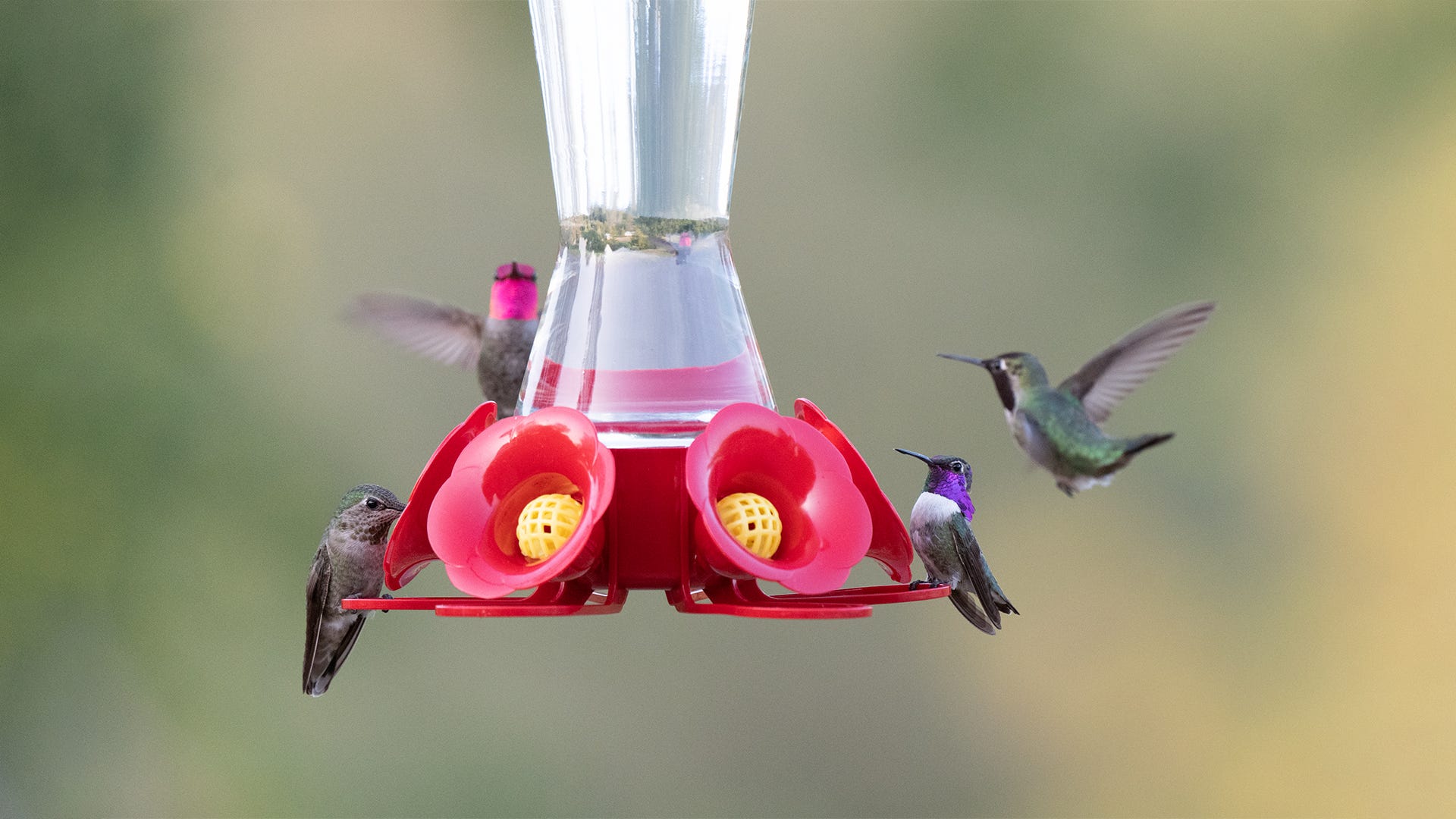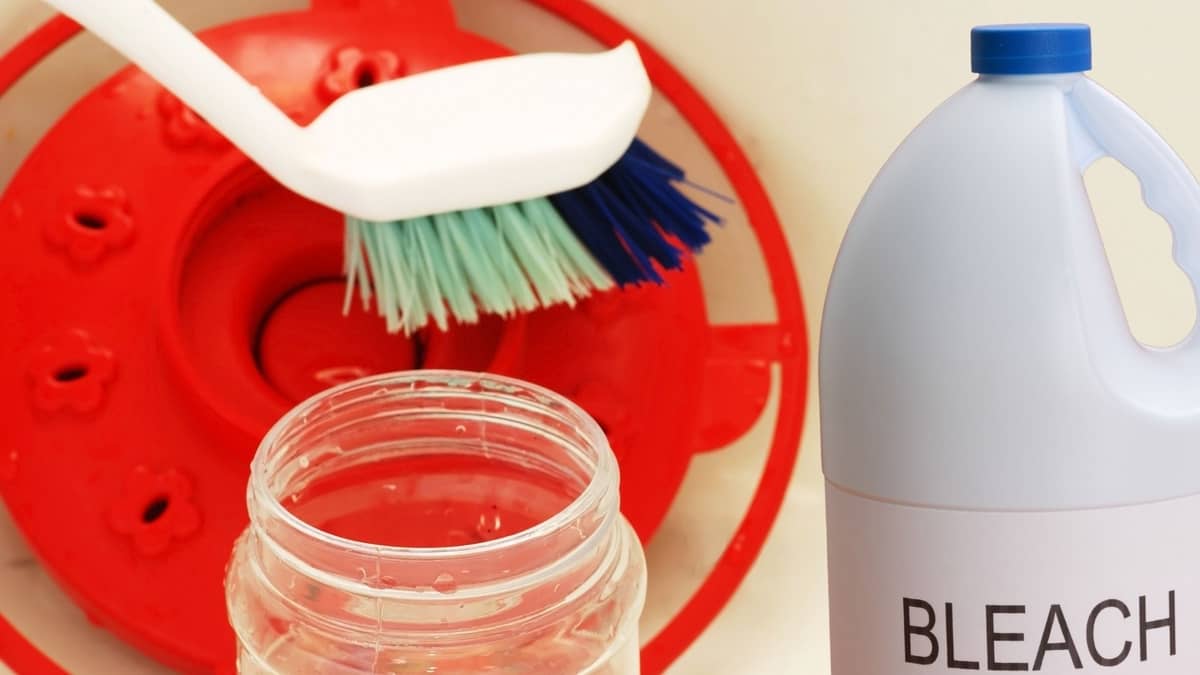Cleaning hummingbird feeders is a crucial aspect of ensuring the well-being of these vibrant birds. By understanding the proper techniques and best practices for cleaning hummingbird feeders, you can prevent mold and bacteria growth, attract more hummingbirds, and protect their health.
This guide will provide you with a comprehensive understanding of everything you need to know about cleaning hummingbird feeders.
Cleaning Methods for Hummingbird Feeders
:max_bytes(150000):strip_icc()/hummingbird-feeder-placement-385956-tree-c2313c55977a4d7ab1f8f8bf20ffa186.jpg)
Maintaining hummingbird feeders requires regular cleaning to ensure the health and well-being of these delicate birds. Here are step-by-step instructions for cleaning a hummingbird feeder, including the frequency of cleaning and different methods available.
Materials Needed
- Hummingbird feeder
- Warm water
- White vinegar or baking soda
- Dish soap (optional)
- Bottle brush or soft cloth
Frequency of Cleaning
Hummingbird feeders should be cleaned every 2-3 days during warm weather and once a week during cooler months. Regular cleaning prevents the growth of mold, bacteria, and yeast, which can be harmful to hummingbirds.
Methods for Cleaning
Using Vinegar
- Empty the feeder of any remaining nectar.
- Fill the feeder with a 50/50 solution of warm water and white vinegar.
- Let the solution soak for 30 minutes to 1 hour.
- Use a bottle brush or soft cloth to scrub the feeder thoroughly, paying attention to the nooks and crannies.
- Rinse the feeder thoroughly with warm water.
- Air dry the feeder before refilling it.
Using Baking Soda
- Empty the feeder of any remaining nectar.
- Fill the feeder with a solution of warm water and baking soda (1 teaspoon per 1 cup of water).
- Let the solution soak for 30 minutes to 1 hour.
- Use a bottle brush or soft cloth to scrub the feeder thoroughly, paying attention to the nooks and crannies.
- Rinse the feeder thoroughly with warm water.
- Air dry the feeder before refilling it.
Using Commercial Cleaning Solutions
Commercial hummingbird feeder cleaning solutions are also available. Follow the instructions on the product label for proper use.
Preventing Mold and Bacteria Growth
Hummingbird feeders, while providing sustenance to these vibrant birds, can also become breeding grounds for mold and bacteria if not properly maintained. Understanding the causes of contamination and implementing preventive measures are crucial for the well-being of hummingbirds and the longevity of the feeders.
Causes of Mold and Bacteria Growth
Mold and bacteria thrive in warm, moist environments, and hummingbird feeders provide the ideal conditions for their proliferation. Sugary solutions, if not replaced regularly, can ferment, creating a nutrient-rich medium for microorganisms. Additionally, leftover nectar can accumulate on the feeder’s surfaces, providing a breeding ground for mold and bacteria.
Prevention Tips, Cleaning hummingbird feeder
To prevent contamination, regular cleaning and proper storage are essential. Here are some tips to keep hummingbird feeders free from mold and bacteria:
- Use boiling water for cleaning:Hot water effectively kills mold spores and bacteria, ensuring thorough disinfection.
- Clean feeders regularly:Clean hummingbird feeders every 2-3 days, especially during hot weather, to prevent the buildup of leftover nectar and debris.
- Avoid sugary solutions:Use a sugar-to-water ratio of 1:4 or 1:5 to minimize fermentation and the risk of mold growth.
Storage Best Practices
When not in use, proper storage of hummingbird feeders is crucial to prevent mold and bacteria growth. Here are some best practices:
- Thoroughly clean the feeder:Before storing, ensure the feeder is thoroughly cleaned and dried to remove any remaining nectar or debris.
- Store in a cool, dry place:Choose a location with low humidity and good ventilation to prevent moisture buildup.
Attracting Hummingbirds with a Clean Feeder

Maintaining a clean hummingbird feeder is paramount for attracting these vibrant birds. A clean feeder ensures the syrup remains fresh, free from mold and bacteria, and safe for hummingbirds to consume. Additionally, a clean feeder provides a hygienic and inviting space for hummingbirds to feed.
Choosing the right type of feeder is crucial. Opt for feeders made of durable materials like glass or plastic that are easy to clean and maintain. Avoid feeders with intricate designs or narrow openings, as they can be challenging to clean and may harbor bacteria.
Optimal Feeder Placement
To attract hummingbirds, place feeders in areas with ample sunlight and protection from the elements. Hang feeders at a height of 4-6 feet above the ground, ensuring they are visible to hummingbirds. Position feeders near flowers or other natural nectar sources to increase their appeal.
Health Considerations for Hummingbirds

Maintaining clean hummingbird feeders is crucial for the well-being of these tiny birds. Contaminated feeders can harbor harmful bacteria and fungi, posing significant health risks to hummingbirds.
Identifying Signs of Illness in Hummingbirds
If a hummingbird exhibits any of the following symptoms, it may be a sign of illness:
- Lethargy or weakness
- Loss of appetite
- Ruffled feathers
- Difficulty flying
li>Discharge from the eyes or beak
Importance of Keeping Feeders Clean
Regularly cleaning hummingbird feeders helps prevent the spread of diseases among these birds. Contaminated feeders can harbor bacteria such as Salmonellaand E. coli, as well as fungi like Aspergillus, which can cause respiratory and gastrointestinal infections in hummingbirds.
By keeping feeders clean, you can help ensure the health and vitality of these beautiful creatures.
Ultimate Conclusion: Cleaning Hummingbird Feeder
Maintaining clean hummingbird feeders is not only essential for attracting these beautiful creatures but also for safeguarding their health. By following the tips Artikeld in this guide, you can create a welcoming environment for hummingbirds in your backyard and contribute to their well-being.
:max_bytes(150000):strip_icc()/hummingbird-feeder-placement-385956-tree-c2313c55977a4d7ab1f8f8bf20ffa186.jpg?w=1920&resize=1920,1280&ssl=1)